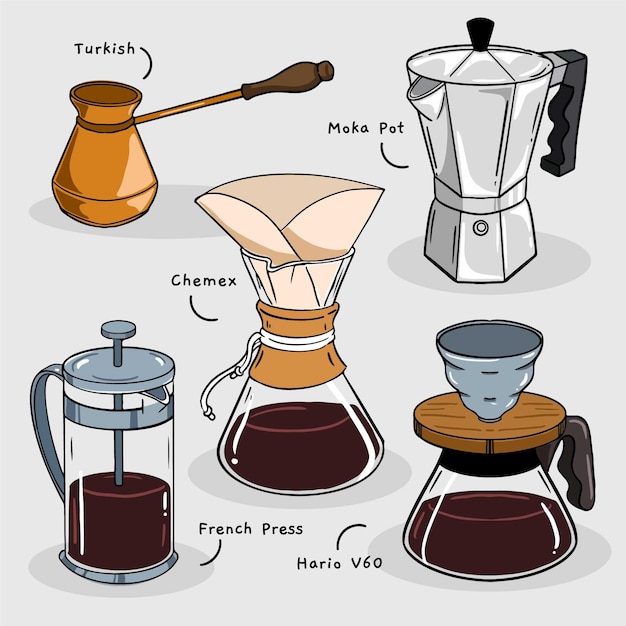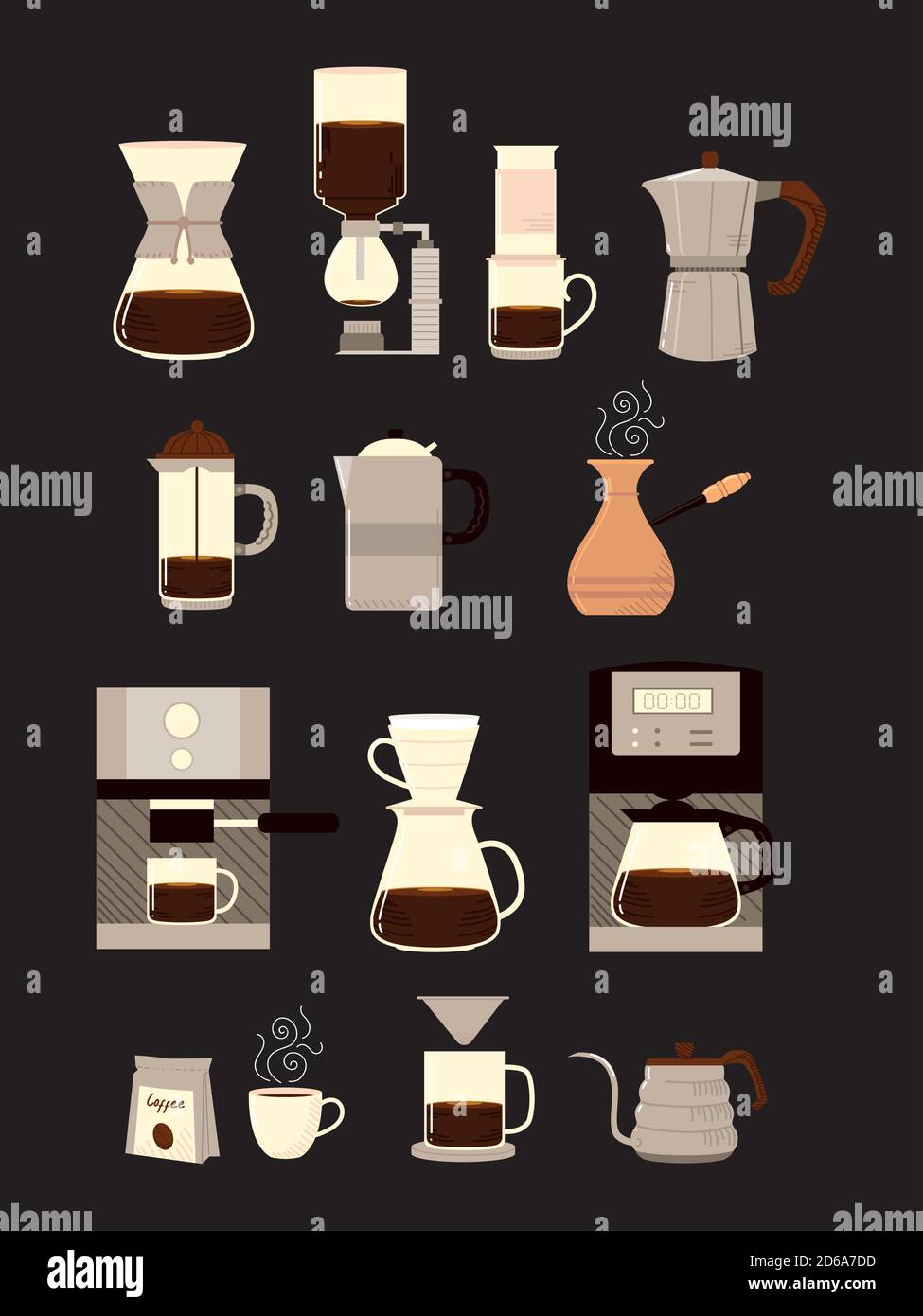The Science Behind Coffee Brewing: Just How Temperature Level and Time Affect Your Beverage
Recognizing the science behind coffee brewing exposes that temperature level and time are not mere variables yet critical aspects that dictate the beverage's taste profile and overall high quality. As we check out the subtleties of these components, the question develops: exactly how can one effectively equilibrium temperature level and time to attain that ideal brew?
The Chemistry of Coffee Removal
The chemistry of coffee removal explores the detailed processes that change raw coffee beans into the fragrant beverage delighted in worldwide. This change mostly entails the solubility of various substances present in the beans, which are affected by elements such as work size, water top quality, and the developing approach employed.
Throughout the developing process, hot water serves as a solvent, removing soluble compounds, consisting of caffeine, sugars, lipids, and acids, from the coffee premises. Each substance adds to the flavor profile, scent, and body of the last beverage. Acids are responsible for zesty and brilliant notes, while oils add to a rich mouthfeel.
The preliminary phases of brewing essence acids and sugars, leading to a pleasant acidity, while extended extraction can lead to bitterness due to over-extraction of undesirable substances. Recognizing these chemical communications is essential for maximizing brewing techniques, as the balance in between removal time and water temperature level can substantially influence the total high quality of the coffee.
Ideal Brewing Temperatures
Locating the appropriate developing temperature is important for unlocking the full capacity of coffee tastes and aromas - coffee brewing methods. Research indicates that the optimum array for brewing coffee exists in between 195 ° F to 205 ° F(90 ° C to 96 ° C) Within this range, the removal process properly liquifies the desirable soluble compounds in coffee beans, resulting in a well balanced and savory cup
Brewing at lower temperatures, such as below 195 ° F(90 ° C ), may result in under-extraction, producing a weak and acidic brew with soft flavors. Alternatively, developing at temperature levels exceeding 205 ° F(96 ° C) can bring about over-extraction, producing a extreme and bitter taste because of the extreme dissolution of undesirable compounds, such as tannins.
In addition, the suitable brewing temperature can differ depending upon the coffee bean kind and roast level. Lighter roasts usually benefit from somewhat higher temperatures to improve their complex flavor accounts, while darker roasts may be better fit to reduced temperature levels to alleviate bitterness.
Ultimately, keeping accuracy in brewing temperatures is critical for accomplishing a harmonious equilibrium of flavors, ensuring that every mug of coffee delivers a rewarding sensory experience.
Influence of Developing Time
Brewing time plays a pivotal function in figuring out the flavor account and total high quality of coffee. Shorter developing times can result in under-extraction, leading to a weak or sour taste, as not enough soluble substances are dissolved.
Optimal developing time varies depending on the approach utilized and the work size of the coffee. For instance, a French press usually calls for concerning 4 minutes, while coffee extraction is usually finished within 25 to 30 seconds. It is vital to adjust brewing time in combination with other variables, such as water temperature and coffee-to-water proportion, to achieve the preferred taste profile.
Recognizing the impact of developing time makes it possible for coffee lovers to fine-tune their developing strategies, eventually boosting the sensory experience of their mug (coffee brewing methods). With mindful attention to this variable, one can open the complete potential of the coffee, disclosing its distinct characteristics and nuances
Developing Methods and Their Results

For instance, techniques like French press and chilly mixture enable a longer steeping time, resulting in a fuller body and robust taste due to increased removal of oils and soluble solids. Conversely, espresso developing uses high stress and a much shorter extraction time, creating a focused shot that emphasizes intense flavors and an abundant crema.
Pour-over strategies, such as Chemex or V60, offer linked here a more regulated removal procedure, permitting the maker to control circulation rate and water distribution, which can enhance brightness and quality. Percolation approaches cycle water via the coffee premises several times, leading to a stronger, frequently bitter flavor.
Last but not least, the usage of paper filters versus steel filters can likewise affect the final preference; paper filters normally generate a cleaner mug by capturing oils and fine particles, while metal filters permit even more oils to go through, contributing to a fuller mouthfeel - coffee brewing methods. Understanding these subtleties can raise the coffee experience substantially
Tips for Refining Your Brew
A well-executed mixture can transform also the simplest coffee right into an exceptional experience. Grind the beans just before making to optimize freshness, ensuring the work dimension matches your brewing technique-- coarser for French press and finer for coffee.
Water high quality plays an important function; usage filtered water devoid of impurities. The suitable developing temperature varies between 195 ° F and 205 ° F(90 ° C to 96 ° C ) Also warm can burn the coffee, while as well cool may under-extract tastes.
Timing is equally crucial. For immersion approaches, steeping for three to five mins is ideal, whereas drip techniques generally take about 5 minutes. Try out mixture times to locate your recommended stamina.

Final Thought
In summary, the detailed partnership between temperature level and time is extremely important in the coffee brewing process. Recognizing check these guys out these scientific concepts equips individuals to refine their developing methods, ultimately leading to a much more pleasurable and well balanced coffee experience.
Recognizing the science behind coffee brewing exposes that temperature and time are not simple variables but crucial aspects that dictate the drink's flavor profile and overall high quality. Understanding these chemical communications is vital for optimizing developing techniques, as the equilibrium in between extraction time and water temperature level can considerably affect the general high quality of the coffee.Brewing time plays a pivotal function in identifying the taste profile and general top quality of coffee. By focusing on these components-- bean quality, grind size, water temperature level, steeping time, and ratio-- you can boost your coffee brewing procedure, resulting in a consistently premium cup.
In summary, the complex relationship between temperature level and time is paramount in the coffee brewing process.
Comments on “The Ultimate Contrast of Popular Coffee Brewing Methods for Home Baristas”